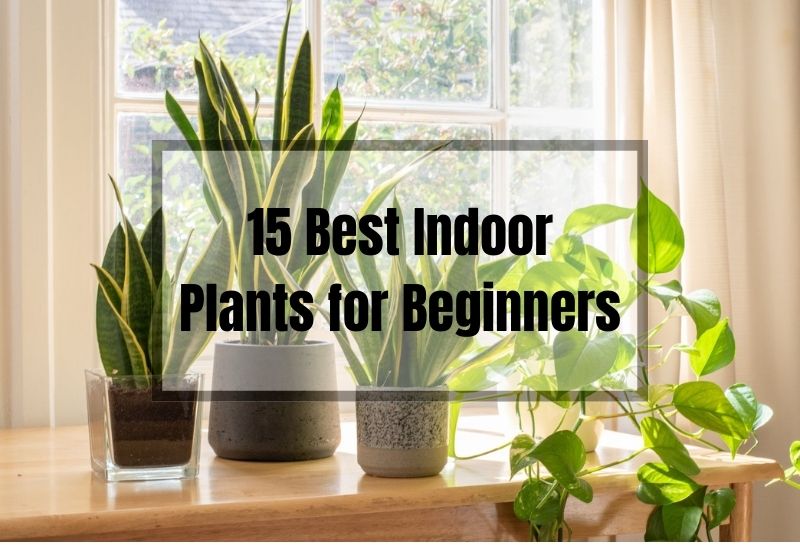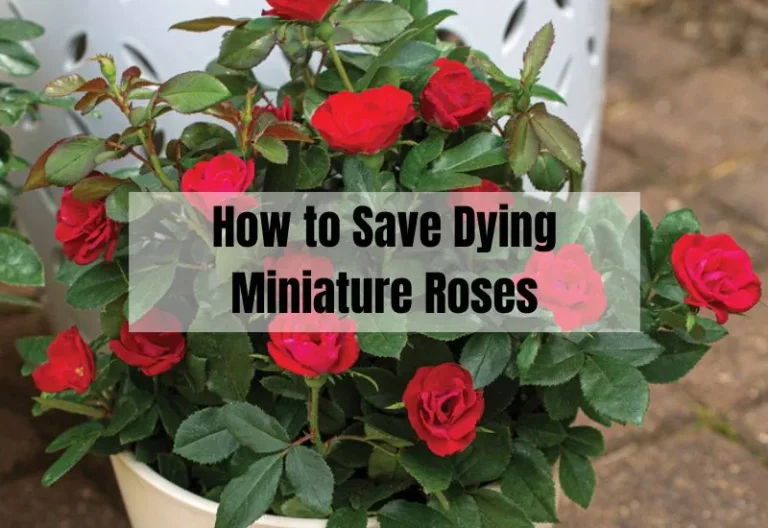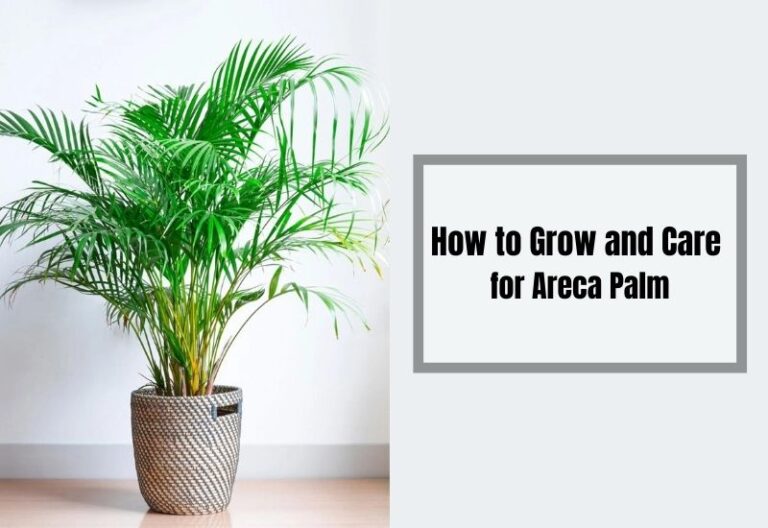15 Best Indoor Plants for Beginners: Tips & Care Guide
Are you new to indoor gardening and looking for beginner-friendly indoor plants? In this article, we’ll introduce you to 15 easy-to-care-for indoor plants that are perfect for beginners.
Indoor plants not only enhance your home’s aesthetics but also offer health benefits like air purification, stress reduction, and mood improvement. Choosing the right plants can be overwhelming, especially if you’re just starting out. That’s why we’ve created this guide to help you discover the best indoor plants for beginners.
We cover a range of options, from low-light plants to air-purifying varieties, and provide tips on plant care for their optimal health. Whether you want to decorate your living room or spruce up your office space, keep reading to find the ideal indoor plants for beginners.

Why Indoor Plants are Important
As a plant enthusiast myself, I can attest to the numerous benefits that indoor plants bring to any living space. Not only do they add a touch of greenery and beauty to your home, but they also provide a myriad of health benefits that you may not be aware of.
Indoor plants are known to purify the air by removing toxins and pollutants, which can improve the air quality of your home. This makes them an excellent addition to any space, especially for those living in urban areas where air pollution is high.
Studies have also shown that indoor plants can improve mental health by reducing stress levels and promoting relaxation. Having plants in your home can create a calming and peaceful environment that can help alleviate anxiety and depression.
In addition, indoor plants can also help with feng shui, the Chinese practice of arranging objects to create a harmonious living space. Plants are believed to bring positive energy and balance to a room, making them an essential element in feng shui.
Overall, indoor plants are not only aesthetically pleasing but also provide numerous health benefits that make them a must-have in any home. So why not bring some greenery into your life and experience the benefits for yourself?
List of 15 Best Indoor Plants for Beginners
- Snake Plant
- Spider Plant
- English Ivy
- Peace Lily
- Heartleaf Philodendron
- Aloe Vera
- Succulents
- Jade Plant
- Golden Pothos Vine
- Lucky Bamboo
- Dracaena
- Rubber Plant
- Peperomia
- Ponytail Palm
- ZZ Plant
Indoor plants need some good amount of care to thrive. Water them regularly, trim them when the need arises, and show them some sunlight from time to time. Here is a curated list of 15 best indoor plants for beginners:
1. Snake Plant
You may have already heard about it. Snake plants are one of the best plants to grow for beginners. They need minimum care and are hard to kill. They need water occasionally and can thrive in low light.
Also commonly referred to as Mother-in-law’s tongue, Snake plants have firm, inflexible, and rigid leaves which can grow anywhere between 6 inches to several feet. The plant also cleans the air.
It has the ability to absorb an immoderate amount of carbon monoxide. In addition to this, snake plants also emit oxygen and filter toxins such as benzene, xylene, trichloroethylene, and formaldehyde from the air.
Caring for Your Snake Plant:
Snake plants have many varieties. Depending on which one you choose, caring for a snake plant is the easiest thing to do. It can thrive in dim or low light and need water occasionally. Do not overwater your snake plant. Let the soil dry in between the waterings.
2. Spider Plant
One of the most adaptable indoor plants, spider plant derives its name from its leaves which resembles a spider’s body. One of the easiest plants to grow, the spider plant can thrive in varied conditions and does not suffer from many problems, excluding brown tips.
Available in green or other variegated varieties, Spider plants were originally found in tropical rainforests of South Africa. Slowly with time, they found a place in our homes. According to research by NASA, Spider plants have the abilities to purify the air. It can potentially remove up to 90% of toxic chemicals from the air. There are around 65 various species of spider plants.
Caring for Your Spider Plant:
Spider plants need a minimum to no care at all. As they are known for being a favourite window plant, spider plants need bright light but no direct sunlight as it may burn the leaves. For watering, wait for the soil to get dry and then water it.
3. English Ivy
English Ivy is very easy-to-grow a plant that requires minimum care. They can grow aggressively as a ground cover reaches 8 inches in height. But due to its aerial rootlets, English Ivy plants are also excellent climbers, clinging to almost any surface.
A native of European countries, English Ivy has now become a household name due to its effortless ability to grow. It needs fertile and moist soil. You can also plant it in outdoor hanging baskets. English Ivy grows well in part or full shade. They prefer cool nights and frequent mistings.
Caring for Your English Ivy:
As told before, English Ivy does not need much care. Once planted it needs bright, indirect light in summers. In winter, some direct light does not harm. Ivy likes to live in moist soil. Hence, water the plant frequently. Always keep the soil a little wet.
4. Peace Lily
The elegant peace lily is one of the easiest plants to grow indoors. Members of the Araceae family, Peace lily, also known as closet plant, can easily adapt to varied conditions and thrive.
Peace lily came to limelight when NASA claimed that it has air cleaning abilities.
The dark green leaves and white flowers make peace lily a beautiful addition to any space. Peace lily tolerates underwatering and thrives in bright, indirect sunlight. A native to tropical rainforests of America, a standard peace lily can grow up to 24-40 inches high.
Caring for Your Peace Lily:
Peace Lily thrives in medium to low light. It prefers underwatering. To water peace lily, first, check the soil. If it feels dry, water the plant; if the soil feels damp, then leave it alone. Peace Lily attracts dust. Hence, it’s best to clean the majestic leaves once in a while with a damp cloth.
5. Heartleaf Philodendron
Heartleaf Philodendron is one of the most difficult to kill plants. Available in a variety of beautiful shades, it is also known as sweetheart plant. The heart-shaped leaves tend to grow 5-10cm long. If you want it to grow as a climber, keep it in hanging baskets or let it trail from a shelf.
Plant the Heartleaf Philodendron is well-aerated soil with good drainage. They need little care. They can live for years without fertilization. They tend to grow very fast and should never be placed in direct sunlight.
Caring for Your Heartleaf Philodendron:
You don’t need any care for Heartleaf Philodendron. It will just grow on its own. When you feel the soil is getting dry, water the plant. Keep it around bright, indirect light and it also works fine in low light.
6. Aloe Vera
Aloe Vera is a medicinal plant being used for treating various ailments and injuries for thousands of years. An evergreen perennial, the aloe vera belongs to the succulent plant species of the genus Aloe. Originated from the Arabian Peninsula, Aloe vera is a popular indoor plant which can easily thrive in a homely environment.
Aloe Vera is found in many consumer products related to skin locations, ointments, or as just plain simple gel. It can grow up to 24-39 inches tall. Widely cultivated around the world, it is now being used in traditional medicines, commercial products, and in dietary supplements.
Caring for Your Aloe Vera:
Place the aloe vera plant in bright, indirect sunlight. Water the aloe vera plant deeply once in 2 weeks or when you think the soil is running dry. Do not water it frequently as overwatering may damage the plant completely.
7. Succulents
Succulents are ideal for those people who have no time to care for plants. Succulents can survive in adverse conditions easily. A very adaptable plant, the word succulent comes from the Latin word sucus, meaning juice. Succulents are naturally a drought-resistant plant.
Succulents are famously presented as a gift. The rugged plants which come in many varieties can be a great add-on to your home decoration. Pleasing to the eyes, the elegant succulents never miss a chance to make their presence felt.
Caring for Your Succulents:
Succulents love direct sunlight. They need about 6 hours of sunlight per day. So, keep them near sunny windows.
Water the plant when the soil gets dry. During the growth period, succulents need more water. Also, succulents tend to attract dust. Hence, once in a while, clean the plant with a damp cloth.
8. Jade Plant
Thick oval-shaped leaves and miniature tree-like appearance makes Jade a popular plant among houseplant lovers. Appealing to the eyes, the jade plant does not need much care and can easily grow on its own.
The jade plant can grow up to 3 to 6 inches. Also called a friendship or dollar plant, the jade is surely an attractive plant which can be a great addition to your home decor. The jade plant produces white flowers in late winters, making them look more captivating.
Caring for Your Jade Plant:
Young jade plants need bright, indirect sunlight. A grown-up jade plant needs 3 to 4 hours of direct sunlight. Overwatering is a big no-no. Jade plant thrives in moist soil. So during summer and spring water the soil till it gets moist but not wet. In winters, water only once in a month.
9. Golden Pothos Vine
Native to Southeast Asia, Golden Pothos Vine is an easy growing plant. Known for its heart-shaped leaves with variegation in yellow, white, or green, golden pothos can easily be found in many homes. It can trail to 10 feet long in indoors conditions.
Apart from looking appealing to the eyes, the golden pothos also cleanses toxins like formaldehyde from the air. The golden pothos can easily adapt to any condition and thrive wherever you grow them.
Caring for Your Golden Pothos Vine:
Pothos prefer bright but indirect light to thrive. Direct sunlight does not suit. When it comes to watering, The golden pothos vine prefers to be watered 1-2 times a week. Allow the soil to get dry between waterings.
10. Lucky Bamboo
The lucky bamboo plant is easy to grow a plant which grows well in indoor conditions. Part of the Dracaena genus, the lucky bamboo is known to be used in Feng Shui, Chinese geomancy, from thousands of years.
It is said to be a representative of good luck, fortune, and happiness. Hence, over the years, it has become one of the most popular gifts in business and personal matters. If you are looking for a plant that does not need much care, then lucky bamboo is for you.
Caring for Your Lucky Bamboo:
Lucky bamboo does not need direct sunlight. It thrives in moderate or indirect sunlight. When it comes to soil, lucky bamboo likes to have a damp but not wet soil. Hence, as soon as you feel the soil is running dry, water the plant.
11. Dracaena
Originated in Madagascar and other Indian Ocean islands, the Dracaena has become a popular houseplant. The plant name comes from the ancient Greek word drakaina meaning ‘the female dragon’.
Also known as the Song of India and Pleomele, the dracaena was used for toothpaste, dyes, and medicines centuries ago. It is an easy to care plant which grows quickly. It also helps purify the air. It can reach a height of 3 feet inside the home and resembles a bushy tree-like look.
Caring for Your Dracaena:
Dracaena prefers filtered indoor light. Direct sunlight is a big no. It prefers slightly misted soil. Hence, water it regularly once the soil starts to run dry. Also, keep the leaves well hydrated by misting the leaves with water frequently.
12. Rubber Plant
Rubber plant, also known as rubber tree or rubber tree plant, is a popular houseplant. With wax-like leaves and large size, the rubber plant adds drama to your home and office. A native to Southeast Asia, rubber plants can grow anywhere up to six to ten feet tall.
With proper care, the rubber plant grows into a beautiful plant with shiny and springy leaves. Rubber plants can survive 50 degrees F low temperature and it prefers humid and moist air to thrive.
Caring for Your Rubber Plant:
Rubber plants prefer bright, indirect sunlight which is not very hot. The variegated varieties need more sunlight. In summer and during growth periods, the plant requires frequent watering. In winters, keep the soil a little dry before watering again. Also, wipe the leaves with a damp cloth in summers to keep them moist.
13. Peperomia
Resembling a rubber plant, the peperomia belongs to the Piperaceae family. Native to tropical and subtropical regions, the peperomia is a delightful plant which is appealing to the eyes and needs minimum care. It helps purify the air and comes in many varieties.
In an indoor setting, the peperomia plant grows up to 12 inches. They have sturdy stems and fleshy, silky leaves. They do not need frequent repotting and are suitable for small spaces. If the plant has thicker and succulent like leaves, it requires low humidity, else the plant needs higher humidity level.
Caring for Your Peperomia:
Bright and indirect sunlight is best for peperomia plants. To avoid leaf scorching, ensure that the plant does not get direct sunlight during the months of summer. Water the plant only when the soil starts to dry.
14. Ponytail Palm
Ideal for people who travel a lot and have no time to take care of the plants, the Ponytail Palm requires very little care. A drought-tolerant and slow-growing palm, Ponytail palm belongs to the Agave family and is a succulent. Also known as the palm tree or elephant foot tree, the plant has hair like leaves which grows like a ponytail, hence the name.
Native to the southeastern desert of Mexico, the Ponytail Palm has become a popular houseplant, especially among beginners. It can survive weeks without water.
Caring for Your Ponytail Palm:
The ponytail palm can survive without water for weeks. Hence, you can water it once a week. It needs bright light and can tolerate direct sunlight throughout the day. In the winter months, water it sparingly.
15. ZZ Plant
Zamioculcas zamiifolia aka the ZZ plant has originated from drought-prone Africa. With its attractive silky dark green leaves, the ZZ plant is a good addition to your home decor. If you are someone who has less time to care for the plants, then worry not! The ZZ plant can tolerate neglect for weeks.
It grows slowly and can reach a height of 2-3 feet. The plant has one major drawback that it is toxic. So it needs to be kept away from children and pets. Wash your hands if you come in direct contact.
Caring for Your ZZ plant:
The ZZ plant prefers low to indirect sunlight. The ZZ plant does not need much water. It can easily thrive in a drought-like situation. Water it when the soil gets completely dry.
Low-Light Indoor Plants
As someone who has had their fair share of struggles with keeping indoor plants alive, I can confidently say that low-light indoor plants are a great option for beginners. Not only are they easy to care for, but they can also thrive in less-than-ideal lighting conditions.
One of my personal favorites is the snake plant (also known as sansevieria or mother-in-law’s tongue). This hardy plant can survive in low light, and it’s also great at purifying the air. Plus, its unique upright leaves make it a stylish addition to any room.
Another low-light plant that’s perfect for beginners is the ZZ plant. This plant is virtually indestructible and can survive in almost any lighting conditions, from low light to bright, indirect light. Its glossy, dark green leaves add a touch of elegance to any space.
If you’re looking for a low-light plant that’s a bit more unique, consider the aspidistra (also known as the cast iron plant). This plant is incredibly tough and can even survive in dimly lit corners. Its dark green leaves are perfect for adding a pop of color to any room.
Finally, the Chinese evergreen is another great option for low-light environments. With its variegated leaves and easy-to-care-for nature, it’s a popular choice for beginners. Plus, it’s known for its air-purifying properties, making it a great addition to any home.
| Plant Name | Lighting Requirements | Care Tips |
|---|---|---|
| Snake Plant | Low to bright, indirect light | Allow soil to dry out between waterings |
| ZZ Plant | Low to bright, indirect light | Water when soil is dry to the touch |
| Aspidistra | Low to bright, indirect light | Water sparingly and avoid direct sunlight |
| Chinese Evergreen | Low to bright, indirect light | Water when soil is dry to the touch |
Overall, low-light indoor plants are a great option for beginners who want to add some greenery to their homes without the stress of high-maintenance plants. From the snake plant to the Chinese evergreen, there are plenty of options to choose from that will thrive in less-than-ideal lighting conditions.
Expert Tips for Indoor Plant Care
As a proud plant mom with a green thumb, I’ve learned a thing or two about indoor plant care over the years. Here are some expert tips to help you keep your indoor plants healthy and thriving:
Plant Care
Before you buy a new plant, make sure you do your research on its specific care needs. Different plants require different amounts of sunlight, water, and nutrients. Some plants, like succulents, prefer dry soil and minimal watering, while others, like ferns, thrive in humid conditions.
Make sure you have the right tools on hand, such as a soil probe and moisture meter, to help you monitor your plant’s needs.
Green Thumb
Don’t worry if you don’t have a green thumb! Indoor plant care is all about trial and error. Start with easy-to-care-for plants like snake plants or pothos and work your way up to more challenging plants.
Remember to be patient and don’t give up if your plant isn’t thriving right away. It takes time to learn how to care for each plant properly.
Yellow Leaves
If you notice yellow leaves on your plant, it could be a sign of overwatering or underwatering.
Check the soil moisture level and adjust your watering schedule accordingly. Yellow leaves can also be a sign of disease, so make sure to inspect your plant regularly and remove any dead or diseased leaves.
Wilting
Wilting can be a sign of both overwatering and underwatering. Make sure you’re not watering your plant too much or too little.
If your plant is still wilting after adjusting your watering schedule, it could be a sign of root rot. Check the roots for any signs of decay and repot your plant if necessary.
Disease
Prevention is key when it comes to plant disease. Make sure you’re not overwatering your plants and that they have proper drainage. Inspect your plants regularly for any signs of disease, such as spots or discoloration. If you do notice signs of disease, isolate the plant from your other plants and treat it with the appropriate fungicide.
Remember, indoor plant care is all about trial and error. Don’t be afraid to experiment and learn from your mistakes. With a little patience and care, your indoor plants will thrive!
Conclusion
Indoor plants are a great addition to any home and office. It not only helps you destress but also makes the environment delightful, to say the least. The above especially curated list of indoor plants for beginners is a perfect way to start gardening.
These plants require less care and can tolerate a certain amount of neglect which makes them appealing for first-time houseplant parents. Once you learn to take care of these plants, you can slowly bring other sensitive plants inside.






